Cover
Copyright page
Preface
Contents
Part One—Preparing the Mind for Logic
1. Be Attentive
2. Get the Facts Straight
3. Ideas and the Objects of Ideas
4. Be Mindful of the Origins of Ideas
5. Match Ideas to Facts
6. Match Words to Ideas
7. Effective Communication
Don't assume your audience understands your meaning if you don't make it explicit.
Speak in complete sentences.
Don't treat evaluative statements as if they were statements of objective fact.
Avoid double negatives.
Gear your language to your audience.
8. Avoid Vague and Ambiguous Language
9. Avoid Evasive Language
10. Truth
Part Two—The Basic Principles of Logic
1. First Principles
The Principle of Identity
The Principle of the Excluded Middle
The Principle of Sufficient Reason
The Principle of Contradiction
2. Real Gray Areas, Manufactured Gray Areas
3. There's an Explanation for Everything, Eventually
4. Don't Stop Short in the Search for Causes
5. Distinguish Among Causes
6. Define Your Terms
7. The Categorical Statement
8. Generalizing
Part Three—Argument: The Language of Logic
1. Founding an Argument
2. The Move from Universal to Particular
3. The Move from Particular to Universal
4. Predication
5. Negative Statements
6. Making Comparisons
7. Comparison and Argument
8. Sound Argument
Conjunctive Argument
Disjunctive Argument
9, Conditional Argument
10. Syllogistic Argument
11. The Truth of Premises
12. The Relevancy of Premises
13. Statements of Fact, Statements of Value
14. Argumentative Form
15. Conclusions Must Reflect Quantity of Premises
16. Conclusions Must Reflect Quality of Premises
17. Inductive Argument
18. Assessing Argument
19. Constructing an Argument
The Truth of Premises
The Strength of Premises
Part Four—The Sources of Illogical Thinking
1. Skepticism
2. Evasive Agnosticism
3. Cynicism and NaÏve Optimism
4. Narrow-Mindedness
5. Emotion and Argument
6. The Reason for Reasoning
7. Argumentation Is Not Quarreling
8. The Limits of Sincerity
9. Common Sense
Part Five—The Principal Forms of Illogical Thinking
1. Denying the Antecedent
2. Affirming the Consequent
3. The Undistributed Middle Term
4. Equivocation
5. Begging the Question
6. False Assumptions
7. The Straw-Man Fallacy
8. Using and Abusing Tradition
9. Two Wrongs Don't Make a Right
10. The Democratic Fallacy
11. The Ad Hominem Fallacy
12. Substituting for the Force of Reason
13. The Uses and Abuses of Expertise
14. The Quantifying of Quality
15. Consider More Than the Source
16. Stopping Short at Analysis
17. Reductionism
18. Misclassification
19. The Red Herring
20. Laughter as Diversionary Tactic
21. Tears as Diversionary Tactic
22. An Inability to Disprove Does Not Prove
23. The False Dilemma
24. Post Hoc Ergo Propter Hoc
25. Special Pleading
26. The Fallacy of Expediency
27. Avoiding Conclusions
28. Simplistic Reasoning
Afterword
Index
About the Author

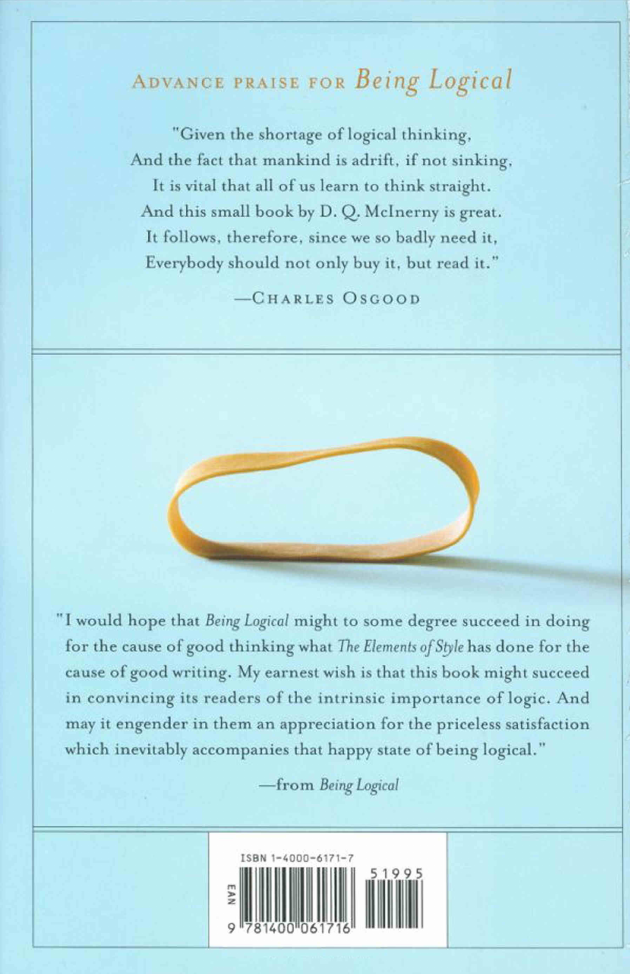
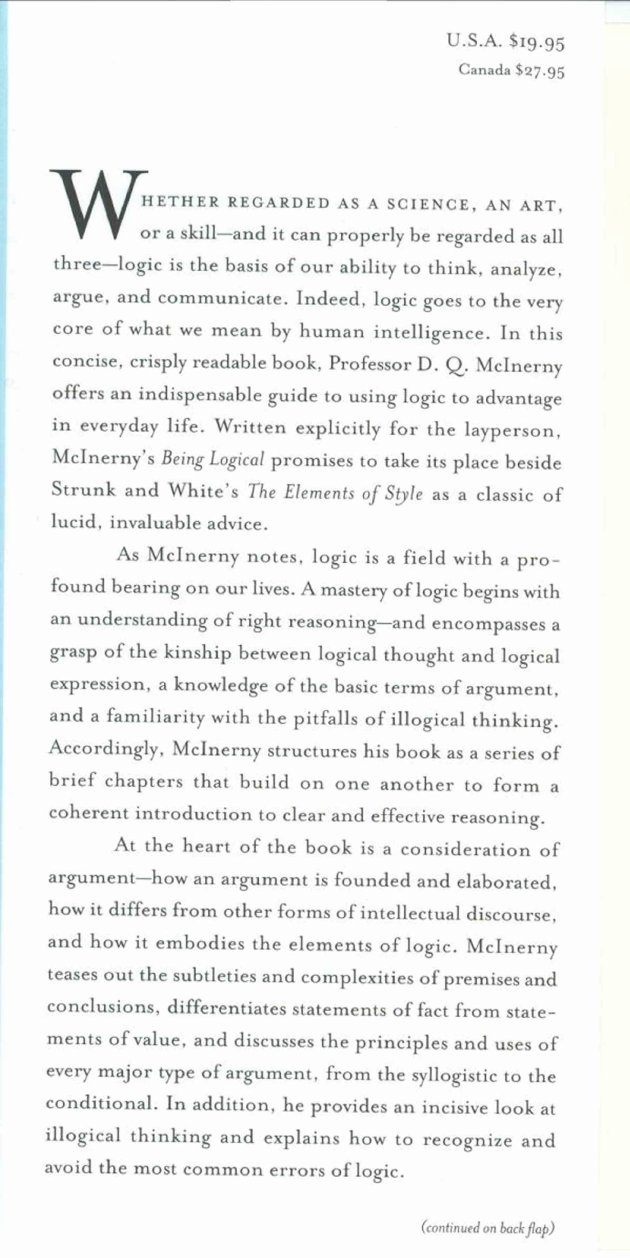
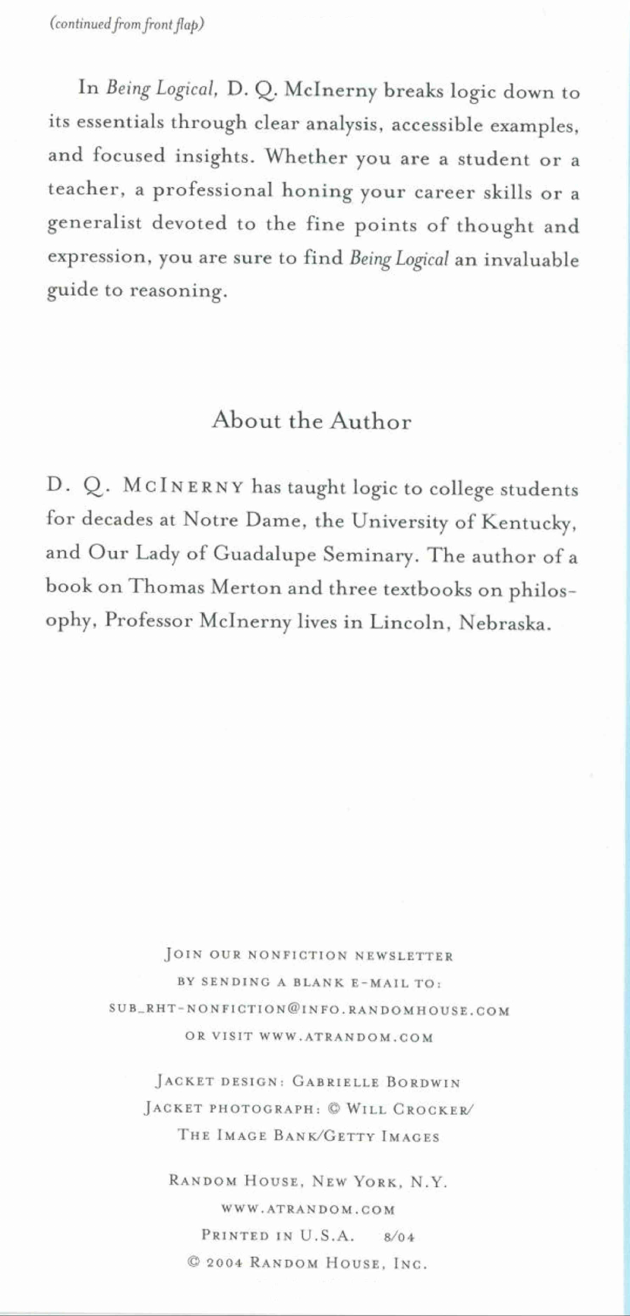


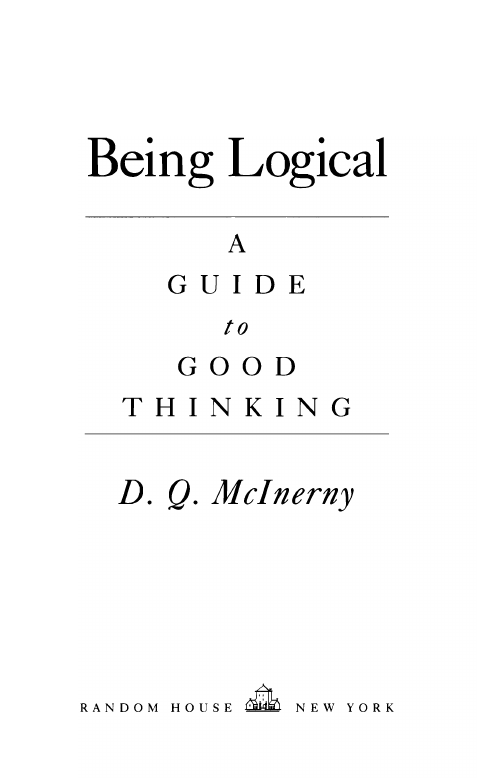
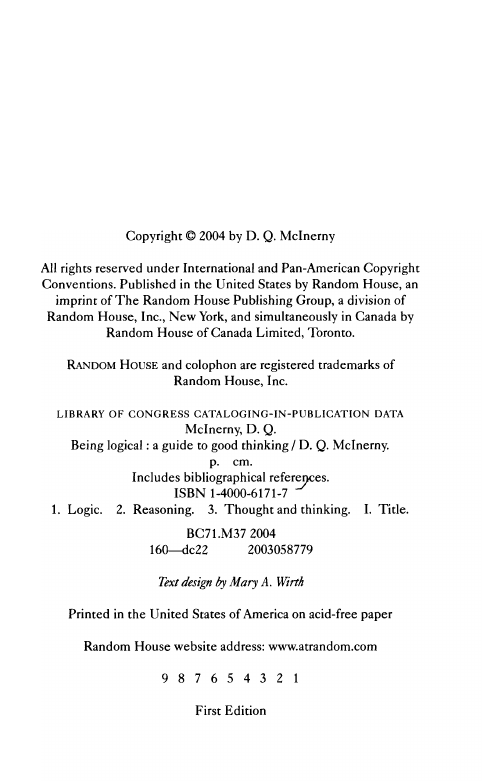








 2023年江西萍乡中考道德与法治真题及答案.doc
2023年江西萍乡中考道德与法治真题及答案.doc 2012年重庆南川中考生物真题及答案.doc
2012年重庆南川中考生物真题及答案.doc 2013年江西师范大学地理学综合及文艺理论基础考研真题.doc
2013年江西师范大学地理学综合及文艺理论基础考研真题.doc 2020年四川甘孜小升初语文真题及答案I卷.doc
2020年四川甘孜小升初语文真题及答案I卷.doc 2020年注册岩土工程师专业基础考试真题及答案.doc
2020年注册岩土工程师专业基础考试真题及答案.doc 2023-2024学年福建省厦门市九年级上学期数学月考试题及答案.doc
2023-2024学年福建省厦门市九年级上学期数学月考试题及答案.doc 2021-2022学年辽宁省沈阳市大东区九年级上学期语文期末试题及答案.doc
2021-2022学年辽宁省沈阳市大东区九年级上学期语文期末试题及答案.doc 2022-2023学年北京东城区初三第一学期物理期末试卷及答案.doc
2022-2023学年北京东城区初三第一学期物理期末试卷及答案.doc 2018上半年江西教师资格初中地理学科知识与教学能力真题及答案.doc
2018上半年江西教师资格初中地理学科知识与教学能力真题及答案.doc 2012年河北国家公务员申论考试真题及答案-省级.doc
2012年河北国家公务员申论考试真题及答案-省级.doc 2020-2021学年江苏省扬州市江都区邵樊片九年级上学期数学第一次质量检测试题及答案.doc
2020-2021学年江苏省扬州市江都区邵樊片九年级上学期数学第一次质量检测试题及答案.doc 2022下半年黑龙江教师资格证中学综合素质真题及答案.doc
2022下半年黑龙江教师资格证中学综合素质真题及答案.doc